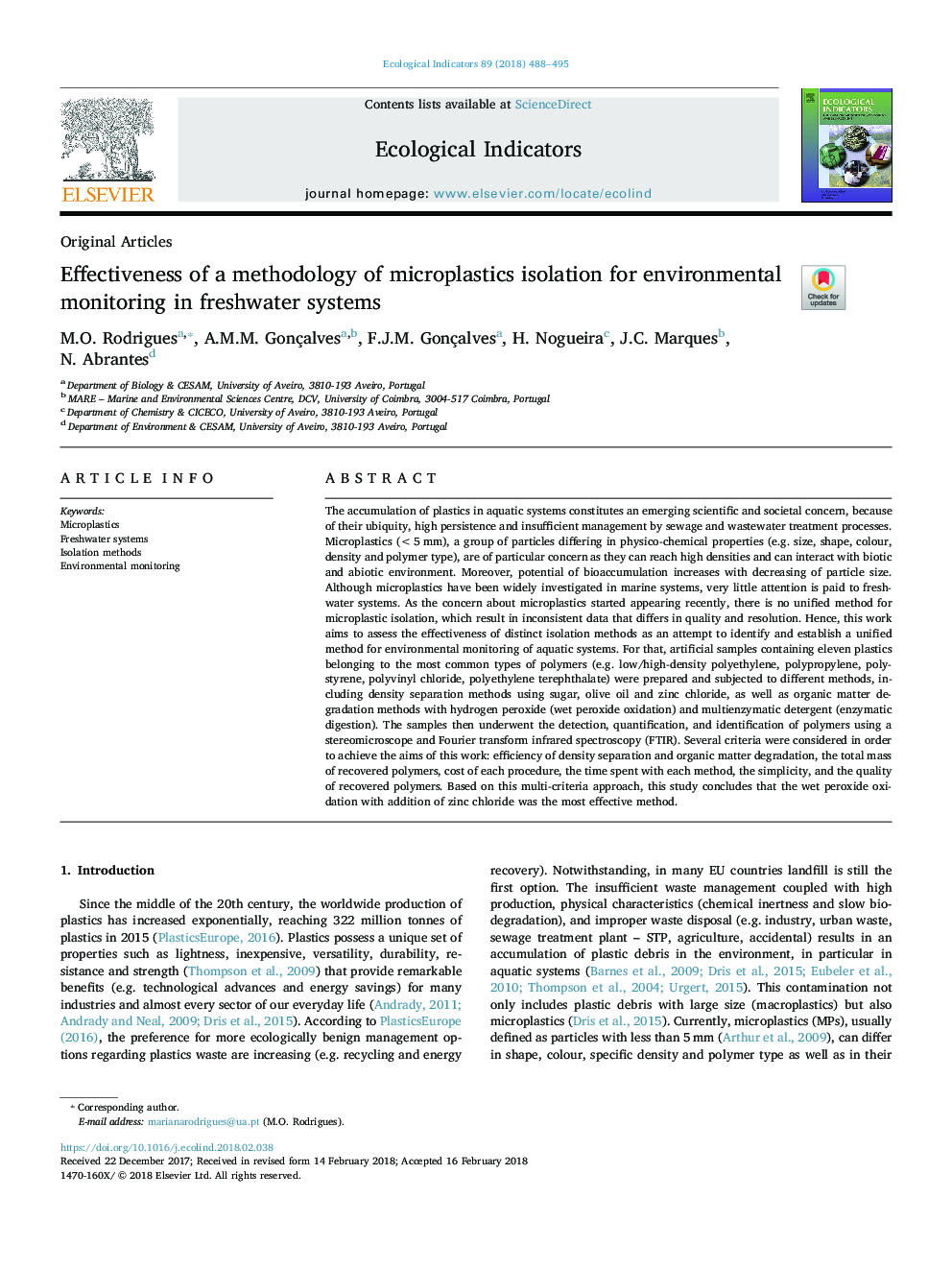| Article ID | Journal | Published Year | Pages | File Type |
|---|---|---|---|---|
| 8845494 | Ecological Indicators | 2018 | 8 Pages |
Abstract
The accumulation of plastics in aquatic systems constitutes an emerging scientific and societal concern, because of their ubiquity, high persistence and insufficient management by sewage and wastewater treatment processes. Microplastics (<5â¯mm), a group of particles differing in physico-chemical properties (e.g. size, shape, colour, density and polymer type), are of particular concern as they can reach high densities and can interact with biotic and abiotic environment. Moreover, potential of bioaccumulation increases with decreasing of particle size. Although microplastics have been widely investigated in marine systems, very little attention is paid to freshwater systems. As the concern about microplastics started appearing recently, there is no unified method for microplastic isolation, which result in inconsistent data that differs in quality and resolution. Hence, this work aims to assess the effectiveness of distinct isolation methods as an attempt to identify and establish a unified method for environmental monitoring of aquatic systems. For that, artificial samples containing eleven plastics belonging to the most common types of polymers (e.g. low/high-density polyethylene, polypropylene, polystyrene, polyvinyl chloride, polyethylene terephthalate) were prepared and subjected to different methods, including density separation methods using sugar, olive oil and zinc chloride, as well as organic matter degradation methods with hydrogen peroxide (wet peroxide oxidation) and multienzymatic detergent (enzymatic digestion). The samples then underwent the detection, quantification, and identification of polymers using a stereomicroscope and Fourier transform infrared spectroscopy (FTIR). Several criteria were considered in order to achieve the aims of this work: efficiency of density separation and organic matter degradation, the total mass of recovered polymers, cost of each procedure, the time spent with each method, the simplicity, and the quality of recovered polymers. Based on this multi-criteria approach, this study concludes that the wet peroxide oxidation with addition of zinc chloride was the most effective method.
Related Topics
Life Sciences
Agricultural and Biological Sciences
Ecology, Evolution, Behavior and Systematics
Authors
M.O. Rodrigues, A.M.M. Gonçalves, F.J.M. Gonçalves, H. Nogueira, J.C. Marques, N. Abrantes,
